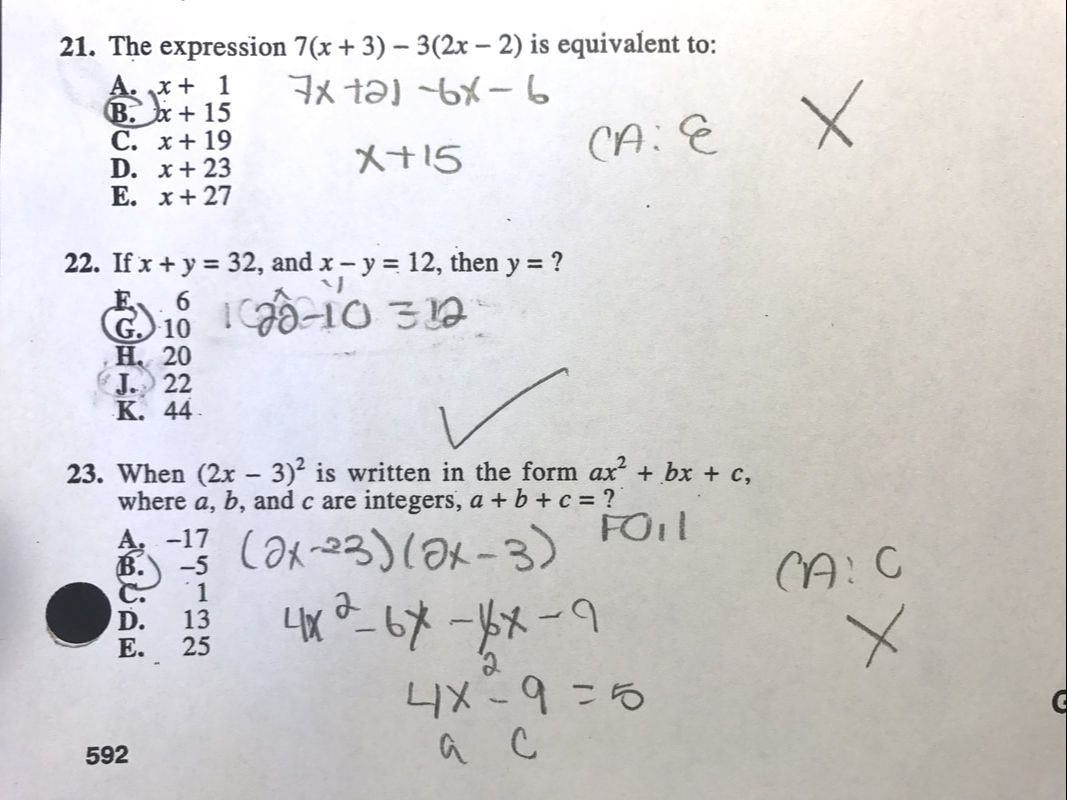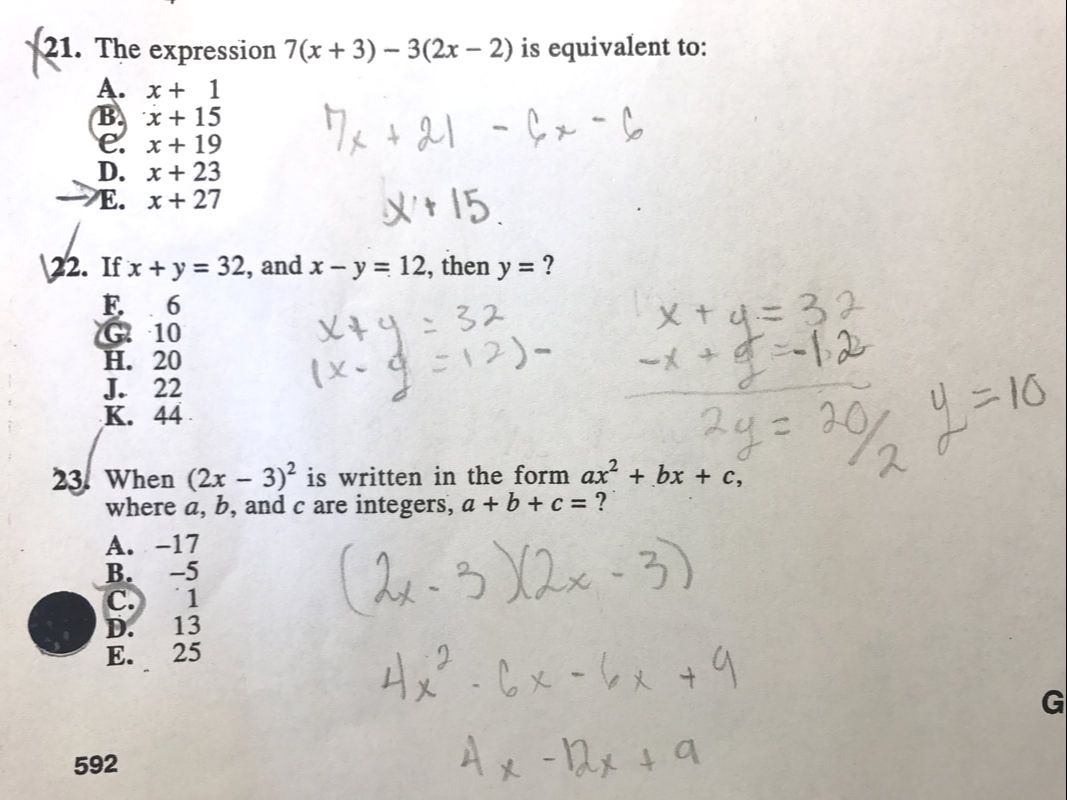Year-Long Assessments
YEAR-LONG ASSESSMENTS OVERVIEW
One of my main academic goals is for 80% of my students to gain at least 3 points on the American College Testing (ACT) exam over the course of the school year. My students take year-long assessments in preparation for the ACT exam. The mission of my high school is to prepare students for "college, careers, and choice-filled lives", so the importance of doing well on the ACT is constantly and consistently messaged to our students from 9th-12th grade. Therefore, all Algebra II students in the KIPP network take real, practice ACT exams each quarter. Students take these exams under real ACT exam conditions and timing. Students take all sections of the ACT exam, so the mathematics section is also a test of endurance, as the students will have just finished the English section. I do not proctor or grade the quarterly ACT exams, so the scores have minimized bias.
These ACT exams provide me with valuable data. The KIPP network releases data for all students who take the quarterly exam, so I can benchmark my students' performance to Algebra II students across the KIPP network. I analyze the ACT data with other 10th and 11th grade teachers in the mathematics department to determine trends in student progress. We observe, advise, and collaborate with each other on how to teach objectives that are not mastered across our classrooms. In addition, I can view individual and whole-class performance on specific College and Career Readiness Standards (CCRS). I analyze and make plans to re-teach and re-assess standards with low mastery. When results are released to families, I conference with students and their parents on their quarterly progress.
Please scroll down or click the table of contents below to see how my students and I prepare for the ACT through diagnostic assessments, formative assessments, summative assessments, and data-driven instruction.
TABLE OF CONTENTS
Diagnostic Assessments
Formative Assessments
Summative Assessments
Data-Driven Instruction
One of my main academic goals is for 80% of my students to gain at least 3 points on the American College Testing (ACT) exam over the course of the school year. My students take year-long assessments in preparation for the ACT exam. The mission of my high school is to prepare students for "college, careers, and choice-filled lives", so the importance of doing well on the ACT is constantly and consistently messaged to our students from 9th-12th grade. Therefore, all Algebra II students in the KIPP network take real, practice ACT exams each quarter. Students take these exams under real ACT exam conditions and timing. Students take all sections of the ACT exam, so the mathematics section is also a test of endurance, as the students will have just finished the English section. I do not proctor or grade the quarterly ACT exams, so the scores have minimized bias.
These ACT exams provide me with valuable data. The KIPP network releases data for all students who take the quarterly exam, so I can benchmark my students' performance to Algebra II students across the KIPP network. I analyze the ACT data with other 10th and 11th grade teachers in the mathematics department to determine trends in student progress. We observe, advise, and collaborate with each other on how to teach objectives that are not mastered across our classrooms. In addition, I can view individual and whole-class performance on specific College and Career Readiness Standards (CCRS). I analyze and make plans to re-teach and re-assess standards with low mastery. When results are released to families, I conference with students and their parents on their quarterly progress.
Please scroll down or click the table of contents below to see how my students and I prepare for the ACT through diagnostic assessments, formative assessments, summative assessments, and data-driven instruction.
TABLE OF CONTENTS
Diagnostic Assessments
Formative Assessments
Summative Assessments
Data-Driven Instruction







